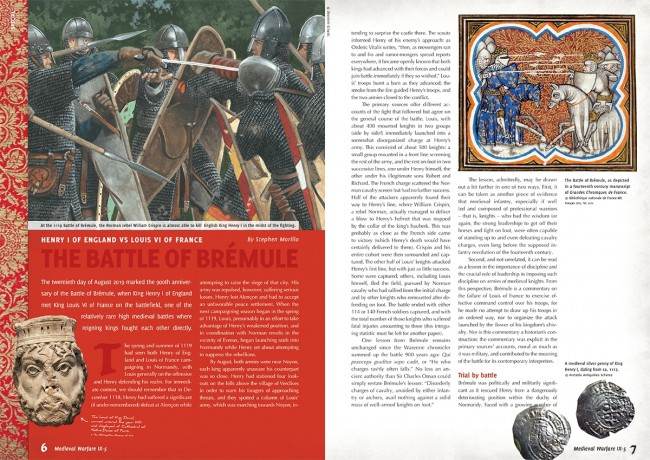The Battle of Bremule, as told by Robert of Torigni
One of the most important medieval texts to be translated in 2020 is The Chronography of Robert of Torigni. It offers us another view of England and France in the twelfth century.
Robert of Torigni was a monk and served as the Abbot of Mont Saint-Michel Normandy for over 32 years before his death in 1186. His passion seems to have been in history, and his Chronography is one of the main works he wrote. This chronicle covers the years 1100 to 1186, and is mostly devoted to covering political events. Robert’s style is plain - one might say dry - but it does offer interesting details, including about the various wars that took place in England and France.
The chronicle’s account of the Battle of Bremule is short, but includes some useful details. Taking place on 20 August 1119, it was fought between Henry I of England and Louis VI of France. Robert of Torigni begins by noting the Louis arrived on the battlefield with William Adelin, the son of Robert Curthose and thus Henry’s nephew. Adelin had spent years trying to regain the Duchy of Normandy, which his father lost at the Battle of Tinchebrai thirteen years earlier.
As for the English side, Robert explains that Henry organized his army this way: “he had put his great men in the first rank, with himself in the second as horseman with his household; in a third he had stationed his sons with a countless force of footmen “
With this short introduction, the chronicler gives a short account of the fighting itself:
Thereupon the first line of the French unhorsed and dispersed the Norman rank of magnates. That brought them into collision with King Henry’s cohort, and that, too, was dispersed. So the royal forces clashed with each other, and fierce conflict raged on both sides. With the shattering of spears came the violence of swords. In the course of it, William Crispin, a gallant knight, struck King Henry on the head with two blows of his sword, and while the armour was impenetrable, yet the sheer force of the blows forced some of it into the king’s head, so that blood gushed forth. So the king, moved to anger, struck back at his assailant in such a way that, although his helmet withstood, the impetus of the blow brought horse and rider to the ground. Whereupon he was captured at the king’s feet. Meanwhile the infantry unit, in which were King Henry’s sons, not yet in the thick of it, yet feeling threatened, sprang into action. Seeing this, the French, weakened in surprised terror, took to flight. Henry for his part remained in the field of victory, until the enemy elite were captured or at his feet.
With the battle over, Henry marched his troops to Rouen, where he was greeted by “tolling bells and the clerical song of praise.”
The Chronography of Robert of Torigni is published by Oxford University Press as part of their Oxford Medieval Texts series. Click here for more details.
You can read more about the Battle of Bremule in an article by Stephen Morillo, which can be found in issue IX:5 of Medieval Warfare. Click here for more details.

